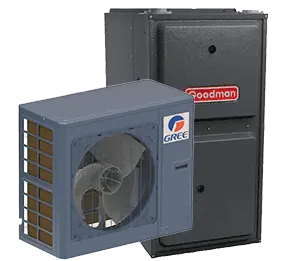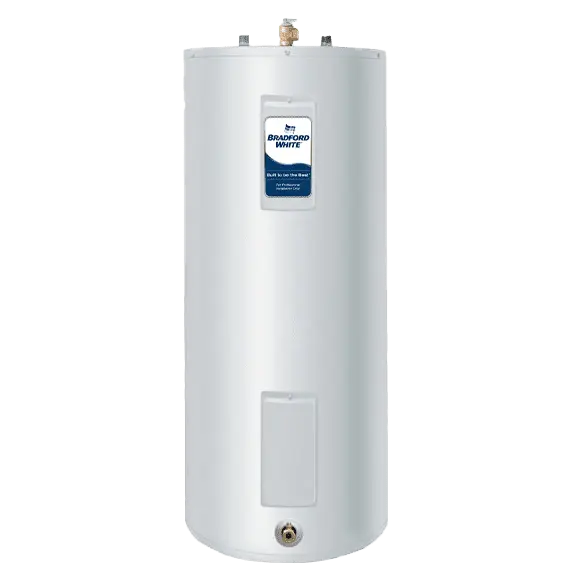Preparing Your Heat Pump for Fall & Winter (Moore & Russell – Greater Vancouver)

Tips to protect outdoor units and maintain airflow during wet months.
1) Give It a Pre-Season “Heat Test”
Switch your system to heat mode on a cool fall morning. Listen for smooth fan starts, confirm warm supply air, and check that the outdoor unit runs quietly, then idles normally when your setpoint is reached. If you notice short-cycling, unusual noises, or no heat, book a diagnostic so we can catch issues before winter.
Tip: After powering the system, give it several hours (ideally overnight) so the crankcase heater (if equipped) can warm the compressor oil before your heat test.
Why it matters: Early faults (sensor issues, low airflow, dirty coils) reduce efficiency and can snowball into mid-season breakdowns. Correct setup and matched components are critical to heat-pump performance.
2) Clean and Clear the Outdoor Unit
Gently remove leaves, fluff, and windblown debris; keep shrubs back and the coil face unobstructed. Keep at least 2 ft (~60 cm) of open space around the outdoor unit (and clear above) for proper airflow. After shutting off the power at the outdoor disconnect, you may lightly hose the exterior fins from the top outward to rinse surface dirt. Avoid high pressure, don’t spray into the fan hub or any electrical panel, and never bend fins. Deeper cleaning is a pro job.
Seasonal guttering note: Make sure downspouts aren’t dumping water toward the pad; persistent spray increases icing.
Why it matters: Clear airflow and a clean outdoor coil support efficient heat transfer and reduce icing frequency.
3) Replace or Wash Filters (Ducted and Ductless)
Swap disposable return filters or wash reusable ones before heating season, then check monthly through the wettest months.
Ductless users: wash the indoor head filters per the manufacturer’s schedule and ensure the intake grille is fully latched.
Why it matters: A plugged filter chokes airflow, strains the compressor, and hurts comfort and efficiency.
4) Check Condensate Drainage and Indoor Coil Access
Verify the condensate line is connected and clear (especially on air handlers that dehumidify during shoulder season). If you see standing water, algae, or a damp cabinet, power down and schedule service. Have a pro clean the indoor coil if it’s matted with dust. Don’t remove sealed panels unless the manual lists them as homeowner-serviceable.
5) Understand Defrost (What’s Normal in BC)
On damp, near-freezing days, frost can form on the outdoor coil. Your system occasionally enters defrost mode to melt it; indoor air may feel lukewarm for a few minutes, and you might see steam outside. This is expected. Vancouver’s damp air means light frost is common near 0 °C; frequent heavy icing is not. If frost never clears or cycles are very frequent, book service. During defrost, systems briefly redirect heat to the outdoor coil; visible steam is normal as frost melts.
6) Set Your Thermostat the BC-Hydro Way: “Set It and Forget It”
For heat pumps, the simple strategy is to set it and forget it, make minor seasonal adjustments (about 1–2 °C) rather than big daily setbacks. BC Hydro recommends minor seasonal adjustments (not big daily setbacks) and using HEAT/COOL rather than AUTO to avoid unwanted mode switching. Significant nightly setbacks can trigger auxiliary heat and raise costs. If you have backup electric resistance or a dual-fuel setup, ask us to confirm your aux/lockout settings so the heat pump does the heavy lifting in our coastal climate.
7) Confirm Airflow Throughout the Home (Registers & Indoor Heads)
Open and clear supply registers and returns; don’t block them with rugs or furniture. For wall-mounted indoor heads, follow the unit’s installation manual for minimum clearances (ensure the intake is unobstructed above and around the unit). Good airflow keeps coil temperature in the right zone, reduces defrost frequency, and evens out room-to-room comfort.
8) Book a Professional Fall Tune-Up
A Moore & Russell technician will:
- Verify refrigerant charge and system controls,
- Test defrost operation and crankcase protection,
- Measure supply/return temperatures and static pressure (airflow),
- Inspect electrical connections and safety devices, and
- Clean coils and confirm condensate drainage.
Why it matters: Professional setup and regular maintenance protect efficiency, comfort, and reliability all winter. Ask about our Maintenance Plans if you’d like annual service and priority scheduling bundled together.
Quick Do & Not-Do List
- Don’t chip ice from the coil, cover the outdoor unit, or stack objects on the cabinet.
- Don’t set big nightly setbacks; they can trigger auxiliary heat.
- Don’t open sealed panels or adjust charge; leave refrigerant/electrical work to a licensed tech.
- Do keep vegetation clear, replace/wash filters, and schedule a pro tune-up before the first winter storm.
FAQ
Should I cover my outdoor unit for winter?
No. Covers trap moisture and can impede defrost. If it snows, clear drifts promptly and keep the base and coil inlets unobstructed.
Are big overnight setbacks OK with heat pumps?
Not in our climate. Significant setbacks often require auxiliary heating. Use minor seasonal tweaks and let the heat pump run steadily.
BC Climate Context: Mild, Wet Winters, Ideal for Heat Pumps
Vancouver’s climate normals show average December temperatures of ~3.6 °C and January temperatures of ~4.1 °C, with frequent rainfall and limited persistent snow. That means long runtimes at moderate outdoor temperatures, ideal for steady-state heat-pump comfort. Cold snaps still happen, so pre-season checks help avoid “first-freeze” surprises.

